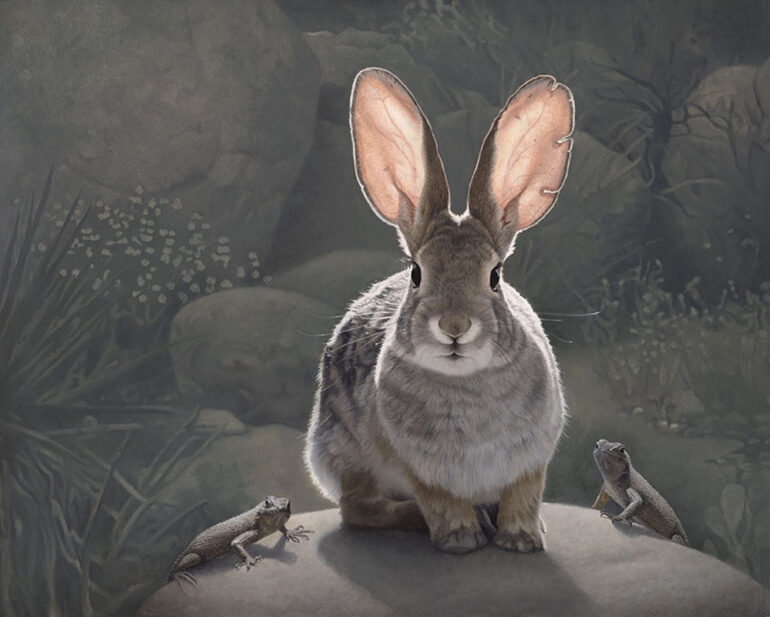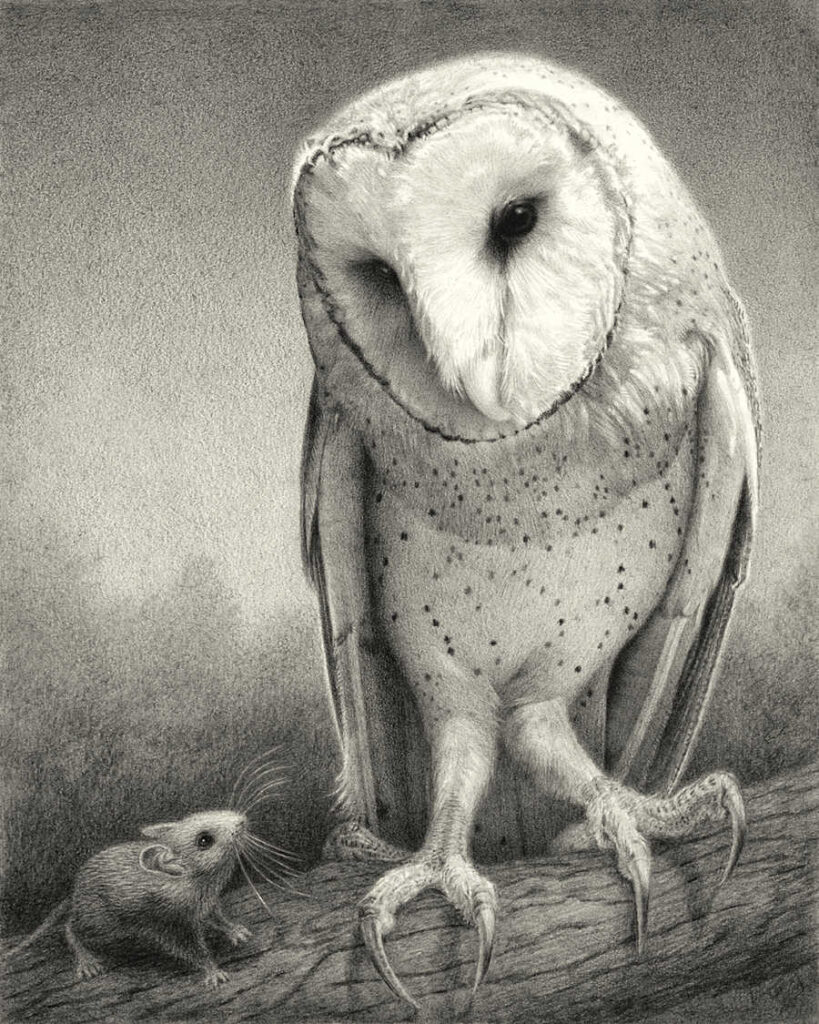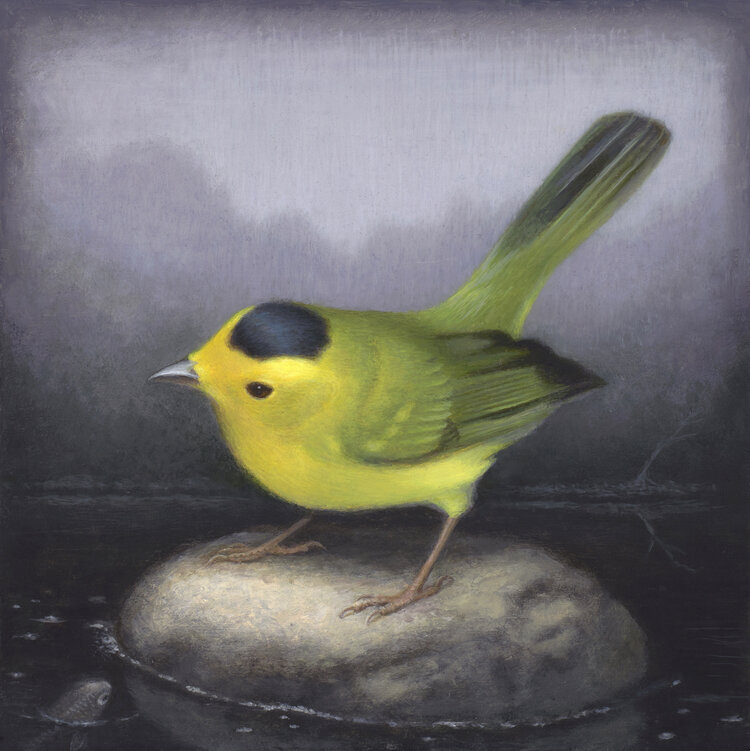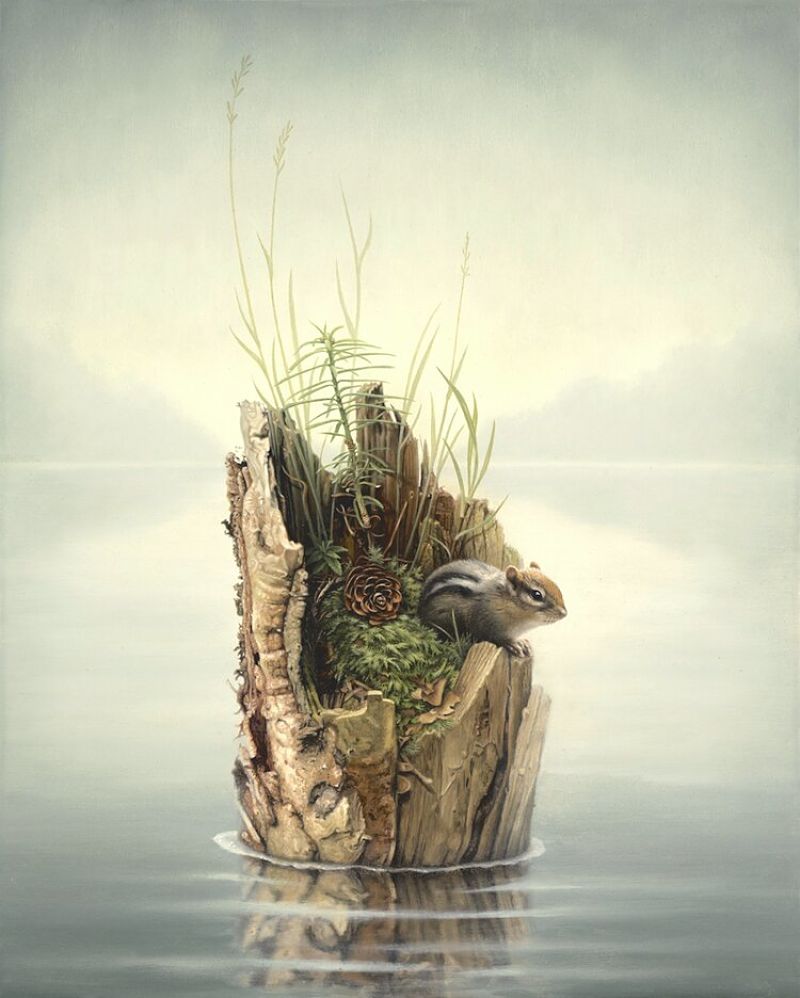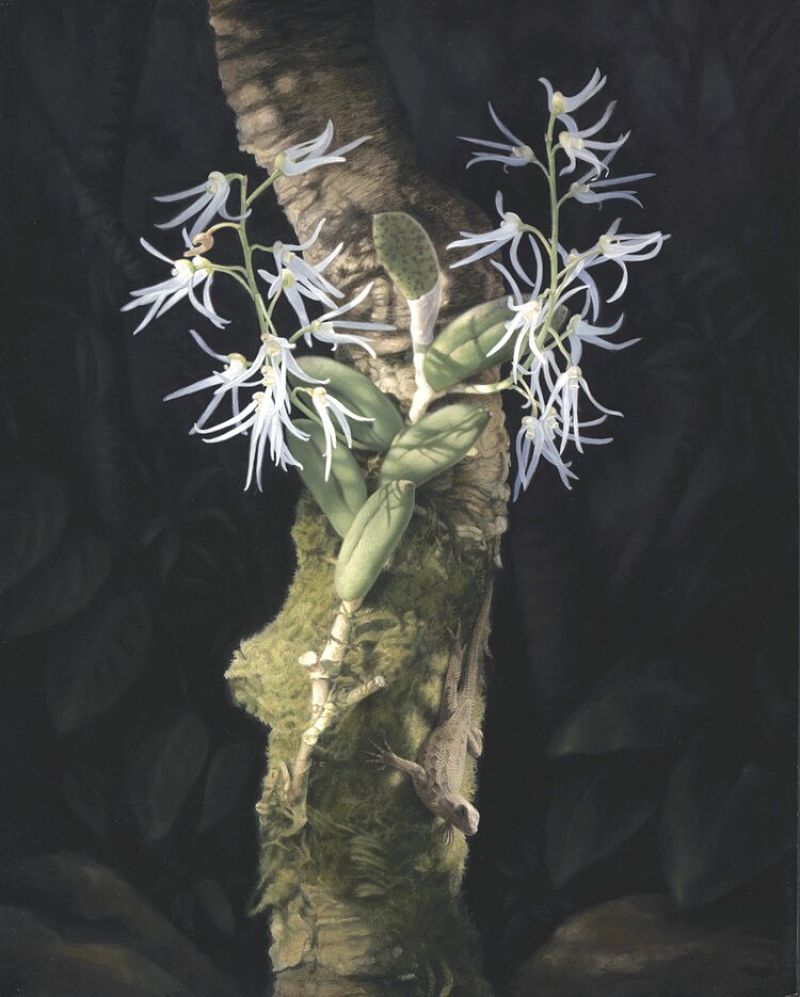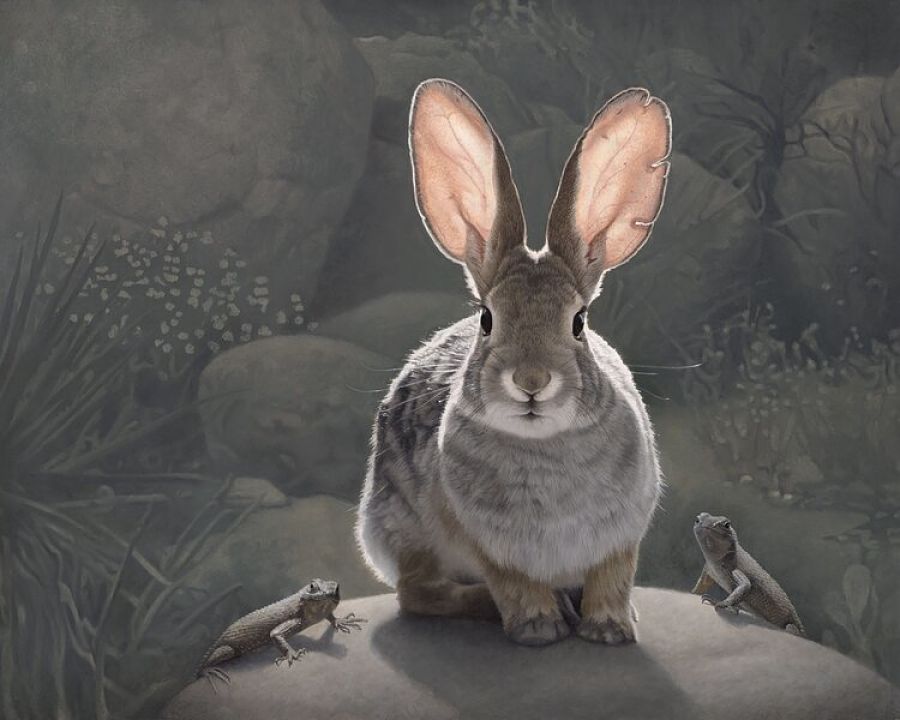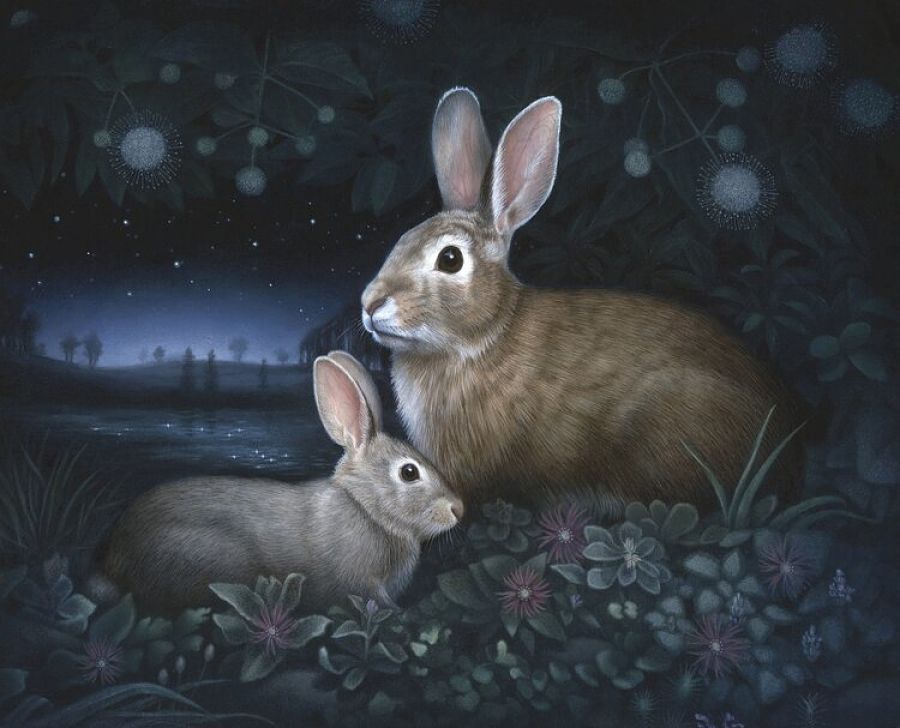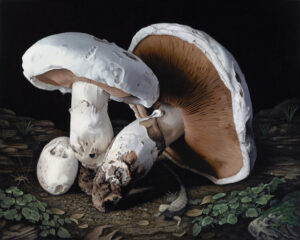Exclusive Interview with Susan McDonnell , 2nd Prize Winner, INPRNT Traditional Art Award, 2020 Beautiful Bizarre Art Prize
American artist Susan McDonnell is a realist painter who paints her encounters of wildlife, and tells stories of nature through her paintings. She received 2nd prize in the INPRNT Traditional Art Category of the Beautiful Bizarre Art Prize Award for her ‘Desert Guardians’ oil painting. While her work is clearly inspired by nature and animals, they are not simple studies of the animals she encounters.
Each piece Susan McDonnell has created includes a strong sense of storytelling.
I have to admit, I didn’t know Susan McDonnell ’s work until she entered the Beautiful Bizarre Art prize, but I am glad that she did. As a fellow admirer and artist of the natural world, it is a great pleasure to delve more into the thoughts and process behind Susan McDonnell’s work. Each of her paintings invites you into a quiet moment. You can almost hear the chirping of the birds flying by or the songs of crickets in the creeks far away. Even though you are invited, you get a sense that the smallest sound you make will disturb the peacefulness of the world she creates.
Susan McDonnell resides in Minnesota, where she takes hikes and walks that forever inspire her ethereal paintings. She recently launched a limited edition print of her winning piece, ‘Desert Guardians’ on her website.
(My Paintings) convey that moment when you encounter an animal in the wild. For me, everything stops and gets quiet, my focus is on the animal and I disappear.
Interview with Susan McDonnell by Hope Doe
First, I want to offer you a congratulations on earning this year’s second prize for the Beautiful Bizarre Art Award category with your stunning painting ‘Desert Guardians.’ What drove you to enter the Beautiful Bizarre Magazine Art Prize?
Thank you so much! Beautiful Bizarre magazine is very welcoming and showcases a wide variety of artists. When I saw the word ‘traditional’ in the INPRNT Traditional Art Award, I thought, “I’m entering”.
What do you feel you have gained from this experience?
I gained a feeling of being part of an art community. One of the prizes was to take part in the “Midnight Garden” show, curated by Beautiful Bizarre magazine at Modern Eden gallery. It was such an honor and pleasure to show alongside so many talented artists. While I tend to be pretty self-motivated, this experience gave me a push to do more, especially in terms of promoting my work.
Would you encourage others to enter? Why?
Yes, definitely. It’s a way of challenging yourself to do your best work. It’s also a wonderful promotional opportunity, and I’m very grateful to Beautiful Bizarre Magazine for sharing their audience in this way.
Your work is enchanting. Your love and respect for animals and the natural world is clear to see. Have animals always been an inspiration for your paintings? What sparked your interest in creating art about them?
For many years I painted still life and a small animal would often find its way into the composition. It’s like they had to enter from the side and gradually they took center stage. I have always loved animals and seeing one in the wild stops me in my tracks. It doesn’t matter if it’s a chipmunk or a black bear. It’s like every curious bone in my body goes on alert.
When the traditional art awards nominees were announced, I saw your painting “Desert Guardians” and it took my breath away. The intense stare of the rabbit feels confrontational. The lizards are looking at you in a protective manner. Can you tell me more about this little cottontail rabbit?
I came upon this cottontail rabbit early in the morning at a friend’s house in the desert. When photographing wildlife I am very aware that I am an intruder and I try to disappear, but once you lock eyes this is difficult. This rabbit seemed to have a look that said, ‘Of course I see you and by the way, I’m not moving’. When creating the painting I wanted to play that up by putting the rabbit in this rocky setting. The lizards are sentries and a bit comical. They may be small, but don’t mess with them!
Do you base your paintings on actual personal encounters with wildlife?
Yes, this is very important to my process and the foundation of what these paintings are about. I think of my paintings as very quiet. They convey that moment when you encounter an animal in the wild. For me, everything stops and gets quiet, my focus is on the animal and I disappear. The experience is like a meditation and I want that to come through in my work.
Do you ever do life studies with your creature subjects? Can you tell us more about this experience?
The life studies I do are with my camera. One of my favorite things to do is to go into nature with my camera and come across a wild animal. It’s like a treasure hunt. For over a year, I walked in a marsh that was home to countless rabbits. The rabbits were very skittish and would run when they would see me. But every so often one would be curious or I would go undetected and then I could get some good photos, treasures.
Could you tell us more about your painting process? How do you start and how do you develop your narrative?
Photography is the first step. As mentioned above, it’s that encounter with an animal in the wild that starts the narrative. I feel a connection that I want to expand upon, perhaps tell a story about. I do sketches based on the photos and then the story develops. I’ll add the setting, mood, and additional characters, if needed. Sometimes the story is as simple as an expression or attitude and sometimes it gets more detailed.
You have stated that Lewis Carrol and Beatrix Potter inspire your imagination, in what ways do these authors take part in your work? Do they inspire the strong narrative feeling that your work projects?
When I stated earlier that ‘my focus is on the animal and I disappear’, maybe a better way of putting this is the ‘everyday’ me disappears and the kid who talks to animals comes forth, the `Alice’ in me comes forth. “Alice in Wonderland” had a big impression on me as a child. In 5th grade my class spent half the school year reading and doing projects around it. A certain absurdist world view got imprinted on me that I let out when working.
It may not be evident in the work itself, but it is there in the dialog I’m having with my subjects out in nature and in the studio. I’d like to think that some of that comes through in the work. Beatrix Potter inspires the idea of the whole animal world having relationships and communications with one another, that animals are living out their lives and creating their own stories. Stories that we can’t see but perhaps can sense if we really slow down and watch, quietly.
Even though your work is categorized as still lifes, your paintings are so elegant full of life, and movement. Is there meaning behind these works? Do you weave allegories into each piece?
I think of these pieces as a guided tour into the natural world. Your guide is the animals, showing what it’s like to live nearby, in nature. When we encounter an animal in the wild and connect with it, I think we care more about nature in general, understand that all life is connected.
Your still lifes are painted with the classical medium, egg tempera. This is such a rare medium nowadays, I am curious, what drew you to using egg tempura? Do you prefer it to painting with oils?
Since going vegan 3 years ago, I no longer paint with egg tempera. I now paint with oil and watercolor, which I have been doing all along. To answer your question, there were several things that drew me to egg tempera. I loved seeing 14th century egg tempera paintings at the Getty Museum that looked like they were painted yesterday. The colors remain fresh and vibrant through the centuries. I became a bit of a pigment nerd and really enjoyed collecting and painting with many historical pigments such as cinnabar, lapis and malachite. There is a wonderful ritual of simply mixing ground pigments with egg yolk and distilled water to create paint. Being able to paint many layers in a single session is probably the thing I enjoyed most about egg tempera.
I think it is important to see the connection and interdependence of all life, to respect all life.
Global warming has become more of a danger, human development is causing our biodiversity to rapidly decrease, have these issues affected your work? If so, in what ways do these issues come into play?
These issues do affect my work in that I think it is important to see the connection and interdependence of all life, to respect all life. Like all animals, the animals I paint have a natural integrity, they have consciousness, I want the viewer to see that and care about them. I recently read the book “We are the Weather: Saving the Planet Begins at Breakfast” by Jonathan Safran Foer. It addresses, what to me is, the elephant in the room that very few talk about; specifically on how animal agriculture has an effect on climate change. It’s significant and something that each one of us can do something about at every meal. Perhaps I’ll soon be painting factory farm animals, I want people to care about them too.
As an artist, the journey to be seen can be long, difficult, and full of success and failures, if you had the chance to speak to your young, hopeful artist self, what advice would you give her?
I would tell her to not go at it alone, especially the business side. About a year and a half ago, I started having regular meetings with two artist friends. We check in and hold each other accountable to the small and large goals we set. It’s also been invaluable for airing ideas and sharing experiences.
Do you have any recommendations for people who would be interested in this competition next year?
Write it on your calendar now.
